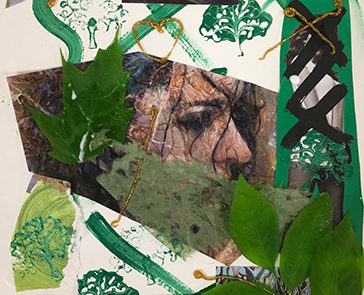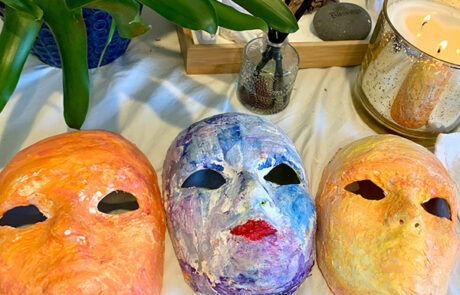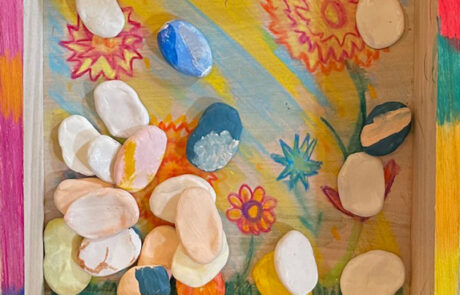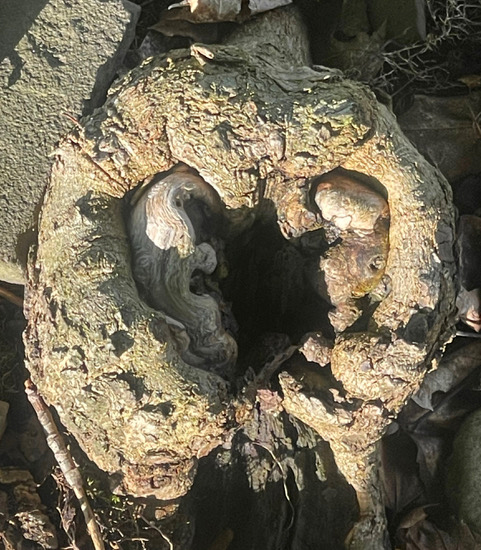
“Get lost in nature and you will find yourself.” – Unknown
I love the expression, “It isn’t brain science,” because in this case, it surely is: Whether your faith is strong, shaky or nonexistent, it is impossible to contemplate a sunset or flower or photos from the Hubble and not feel connected to something, even if that something is yourself.
Now, advances in brain science and research are explaining why – it appears that we have physically evolved to be more relaxed outside.
Since the beginning of time, human beings have found comfort, peace and solace in the natural world. It is why we are drawn to water, love a great hike, or why even gazing out a window and seeing trees helps hospital patients recover more quickly.
Time in nature is known to lower stress, increase well-being, improve performance, concentration and memory, and yes – even ease pain.
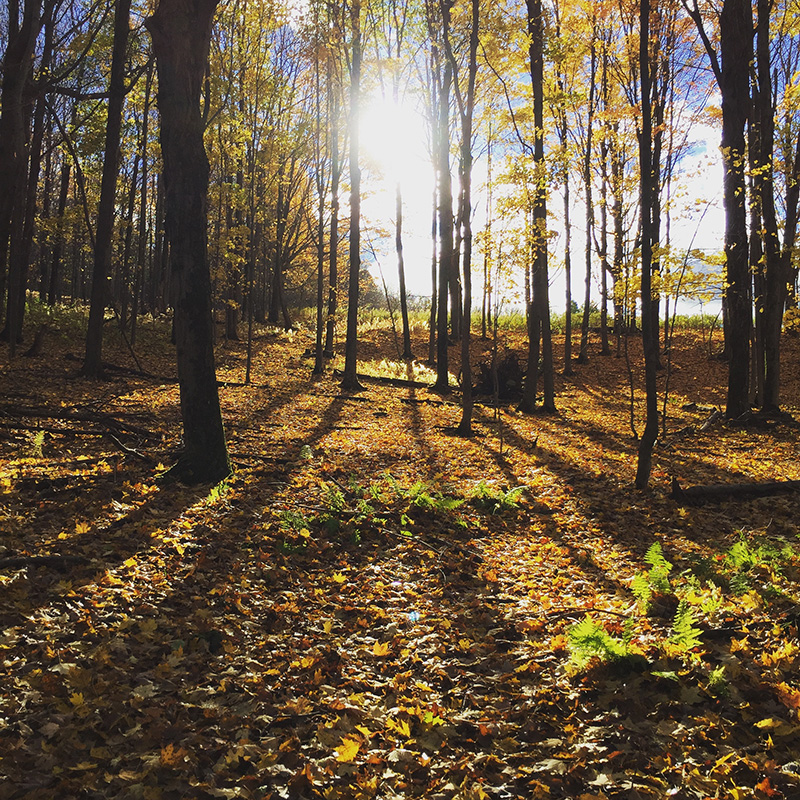
Don’t take my word for it; the case for the great outdoors is clear:
- It IS Brain Science: When participants in another study viewed nature scenes, the parts of the brain associated with empathy and love lit up, but when they viewed urban scenes, the parts of the brain associated with fear and anxiety were activated.
- De-Stressing: From a study conducted at Texas A and M: “Participants who first viewed a stress-inducing movie, and were then exposed to color/sound videotapes depicting natural scenes, showed much quicker, more complete recovery from stress than those who had been exposed to videos of urban settings.”
- Feeling Healthier: From NatGeo, This is Your Brain on Nature: “In 2009 a team of Dutch researchers found a lower incidence of 15 diseases—including depression, anxiety, heart disease, diabetes, asthma, and migraines—in people who lived within about a half mile of green space. Lower mortality and fewer stress hormones circulating in the blood have also been connected to living close to green space.”
- Feeling Wealthier: “In 2015, an international team overlaid health questionnaire responses from more than 31,000 Toronto residents onto a map of the city, block by block. Those living on blocks with more trees showed a boost in heart and metabolic health equivalent to what one would experience from a $20,000 gain in income.
- And More Creative: From monitoring the EEG readings of subjects walking in an arboretum, another researcher found that the prefrontal cortex of the brain “recovered” from the strains of normal multi-tasking, allowing for, “bursts in creativity, problem-solving and feelings of well-being.”
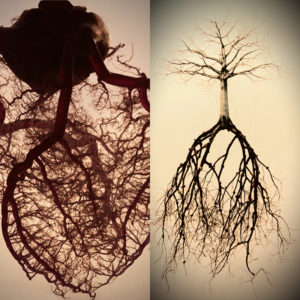
Veins of the human heart and tree roots
In my belief system, Nature nurtures us as humans because we are as one; interchangeable with all growing things. The shapes, the forms, patterns and movements resonate with us on a very deep soul level. Tree branches extend like arms, sunflowers have personality and bark is just like skin. For me, there is a reason that the veins in our body looks just like the roots of a tree – the Universe made it exactly this way so we would have an abiding way to connect and heal.
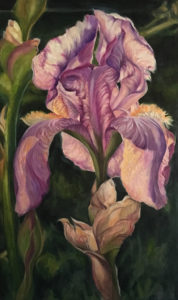
“Passage,”oil on canvas,34.5 x 21 inches
©2017 Elizabeth Bryan-Jacobs
To take this though further, the never-ending beauty and transitions of nature reflect our life’s journey of growth, loss and re-birth. Our sense of hope expands, and we feel connected to all things higher. To quote Albert Einstein, “Look deep into nature and then you will understand everything better.”
To understand the true impact of nature on your own life, simply step outside, and gift yourself with a moment of fresh air. Silence your cell phone and listen for the sounds of the natural world. Notice the breeze on your body or the sun on your face. Let these sensations fully sink in, a la Dr. Rick Hanson (author, Buddha’s Brain) who I wrote about under the meditation tab.
Here’s the point: you don’t need to wait for challenge to hit to seek relief in Nature. Integrate Nature into your daily life in any way, shape or form as preventative medicine. This small, yet powerful act of Self-Love is sure to plug you back into the present moment, offering abiding hope, wellness and joy.

Calico Basin, Las Vegas, Nevada
ADDITIONAL READING:
This Is Your Brain on Nature
How Walking in Nature Changes the Brain
How Does Nature Impact Our Wellbeing
http://www.businessinsider.com/scientific-benefits-of-nature-outdoors-2016-4/#8-possible-anti-cancer-effects-8
https://www.takingcharge.csh.umn.edu/enhance-your-wellbeing/environment/nature-and-us/how-does-nature-impact-our-wellbeing
http://www.nationalgeographic.com/magazine/2016/01/call-to-wild/
http://greatergood.berkeley.edu/article/item/how_nature_makes_you_kinder_happier_more_creative
“Get lost in nature and you will find yourself.” – Unknown
I love the expression, “It isn’t brain science,” because in this case, it surely is: Whether your faith is strong, shaky or nonexistent, it is impossible to contemplate a sunset or flower or photos from the Hubble and not feel connected to something, even if that something is yourself.

Now, advances in brain science and research are explaining why – it appears that we have physically evolved to be more relaxed outside.
Since the beginning of time, human beings have found comfort, peace and solace in the natural world. It is why we are drawn to water, love a great hike, or why even gazing out a window and seeing trees helps hospital patients recover more quickly.
Time in nature is known to lower stress, increase well-being, improve performance, concentration and memory, and yes – even ease pain.

Don’t take my word for it; the case for the great outdoors is clear:
- It IS Brain Science: When participants in another study viewed nature scenes, the parts of the brain associated with empathy and love lit up, but when they viewed urban scenes, the parts of the brain associated with fear and anxiety were activated.
- De-Stressing: From a study conducted at Texas A and M: “Participants who first viewed a stress-inducing movie, and were then exposed to color/sound videotapes depicting natural scenes, showed much quicker, more complete recovery from stress than those who had been exposed to videos of urban settings.”
- Feeling Healthier: From NatGeo, This is Your Brain on Nature: “In 2009 a team of Dutch researchers found a lower incidence of 15 diseases—including depression, anxiety, heart disease, diabetes, asthma, and migraines—in people who lived within about a half mile of green space. Lower mortality and fewer stress hormones circulating in the blood have also been connected to living close to green space.”
- Feeling Wealthier: “In 2015, an international team overlaid health questionnaire responses from more than 31,000 Toronto residents onto a map of the city, block by block. Those living on blocks with more trees showed a boost in heart and metabolic health equivalent to what one would experience from a $20,000 gain in income.
- And More Creative: From monitoring the EEG readings of subjects walking in an arboretum, another researcher found that the prefrontal cortex of the brain “recovered” from the strains of normal multi-tasking, allowing for, “bursts in creativity, problem-solving and feelings of well-being.”

Veins of the human heart and tree roots
In my belief system, Nature nurtures us as humans because we are as one; interchangeable with all growing things. The shapes, the forms, patterns and movements resonate with us on a very deep soul level. Tree branches extend like arms, sunflowers have personality and bark is just like skin. For me, there is a reason that the veins in our body looks just like the roots of a tree – the Universe made it exactly this way so we would have an abiding way to connect and heal.

“Passage,”oil on canvas,34.5 x 21 inches
©2017 Elizabeth Bryan-Jacobs
To take this though further, the never-ending beauty and transitions of nature reflect our life’s journey of growth, loss and re-birth. Our sense of hope expands, and we feel connected to all things higher. To quote Albert Einstein, “Look deep into nature and then you will understand everything better.”
To understand the true impact of nature on your own life, simply step outside, and gift yourself with a moment of fresh air. Silence your cell phone and listen for the sounds of the natural world. Notice the breeze on your body or the sun on your face. Let these sensations fully sink in, a la Dr. Rick Hanson (author, Buddha’s Brain) who I wrote about under the meditation tab.
Here’s the point: you don’t need to wait for challenge to hit to seek relief in Nature. Integrate Nature into your daily life in any way, shape or form as preventative medicine. This small, yet powerful act of Self-Love is sure to plug you back into the present moment, offering abiding hope, wellness and joy.

Calico Basin, Las Vegas, Nevada
ADDITIONAL READING:
This Is Your Brain on Nature
How Walking in Nature Changes the Brain
How Does Nature Impact Our Wellbeing
http://www.businessinsider.com/scientific-benefits-of-nature-outdoors-2016-4/#8-possible-anti-cancer-effects-8
https://www.takingcharge.csh.umn.edu/enhance-your-wellbeing/environment/nature-and-us/how-does-nature-impact-our-wellbeing
http://www.nationalgeographic.com/magazine/2016/01/call-to-wild/
http://greatergood.berkeley.edu/article/item/how_nature_makes_you_kinder_happier_more_creative

